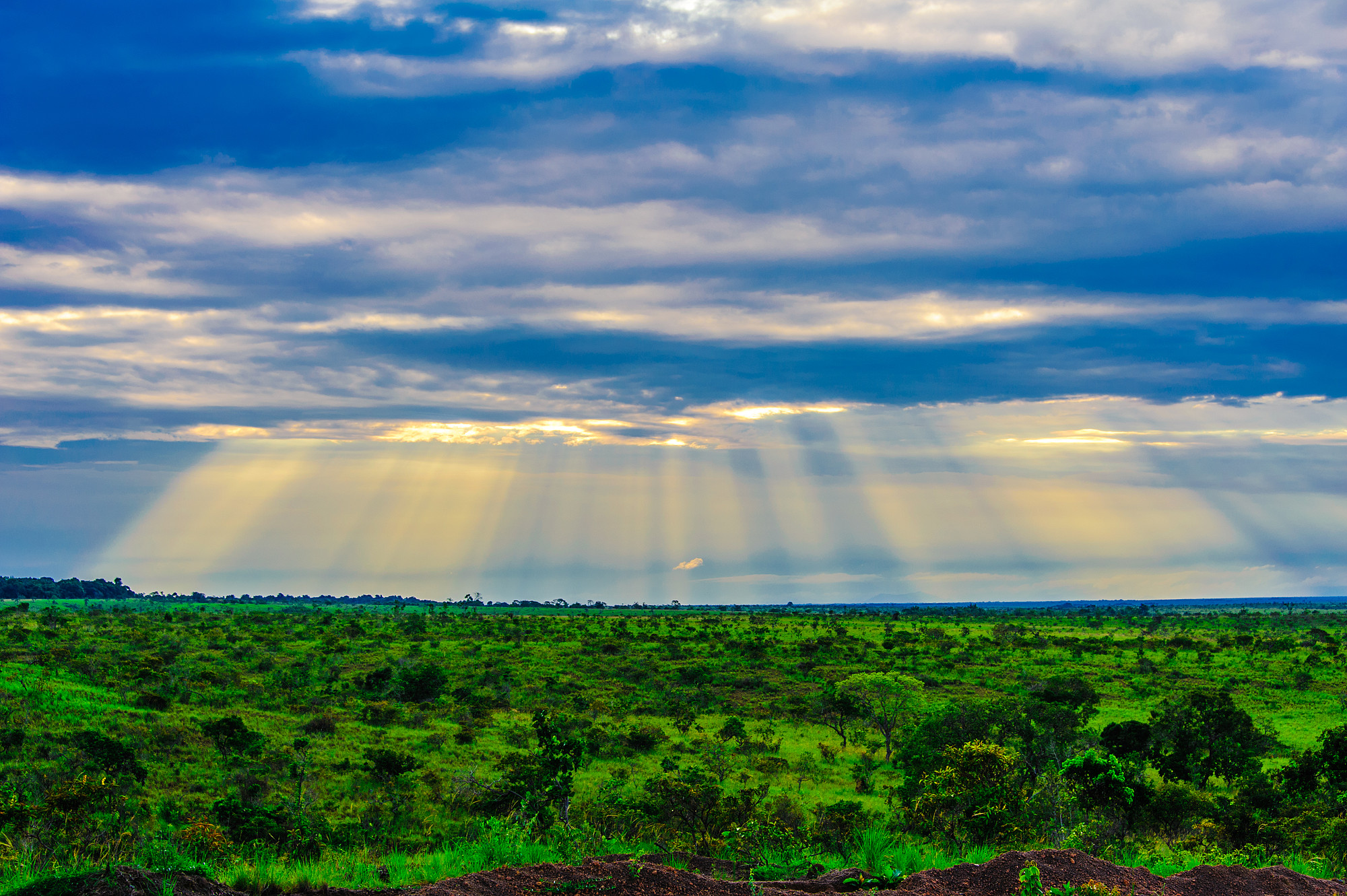We undressed for a swim. That is, Coen changed into swimming trunks but I, conforming to the Amerindian female swimming suit, donned shorts and a T-shirt. Wading into the clear water, our feet didn’t sink into a sandy bottom but felt laterite. According to our GPS, the Rupununi River ran more than a mile from here – there shouldn’t be any water at all. But it was summer and the river had flooded, as it does annually. What in the fall would become dry, dusty land had now exploded into a lush green landscape, part of which was wetland where birdlife thrived.
The Feeling of Freedom
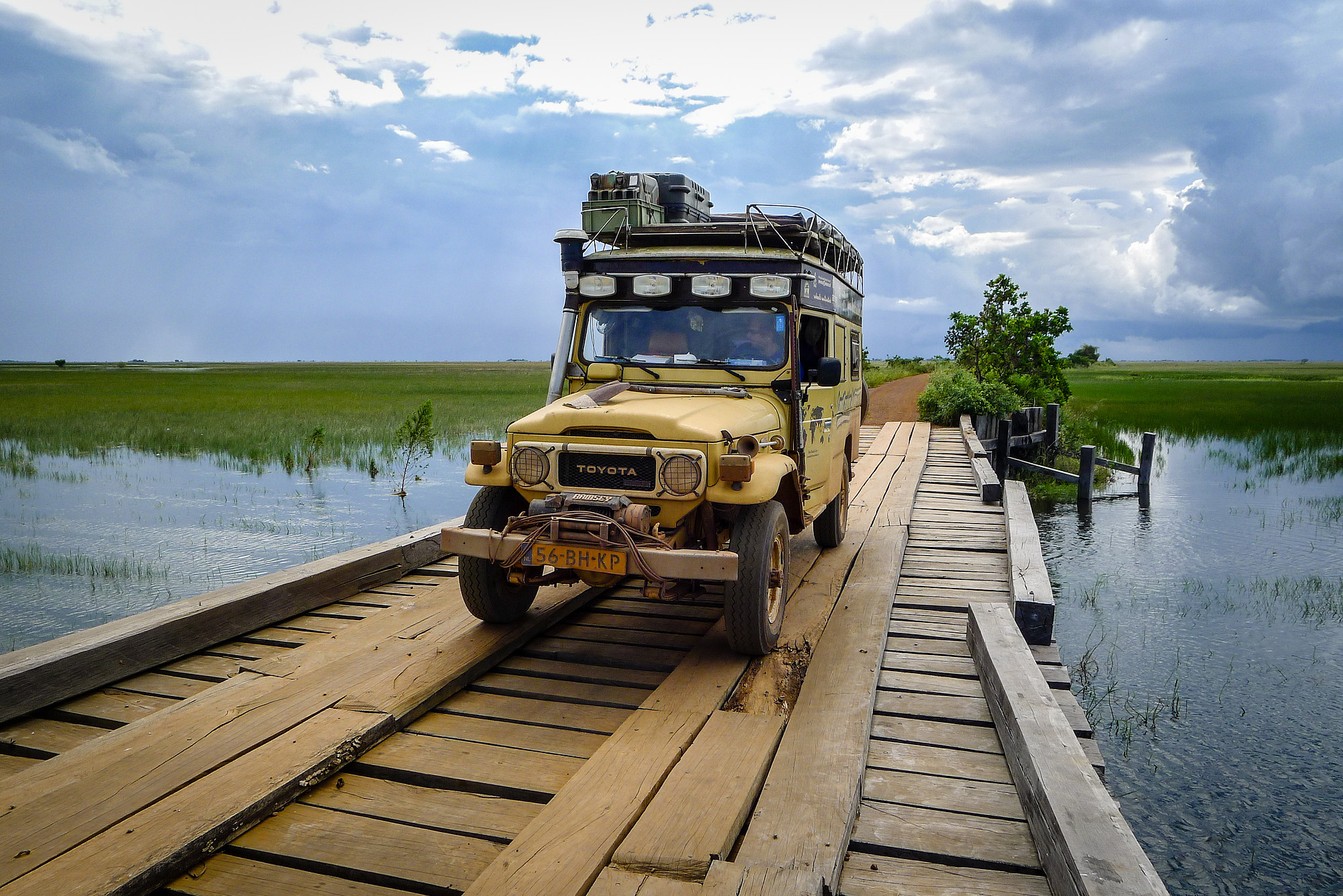
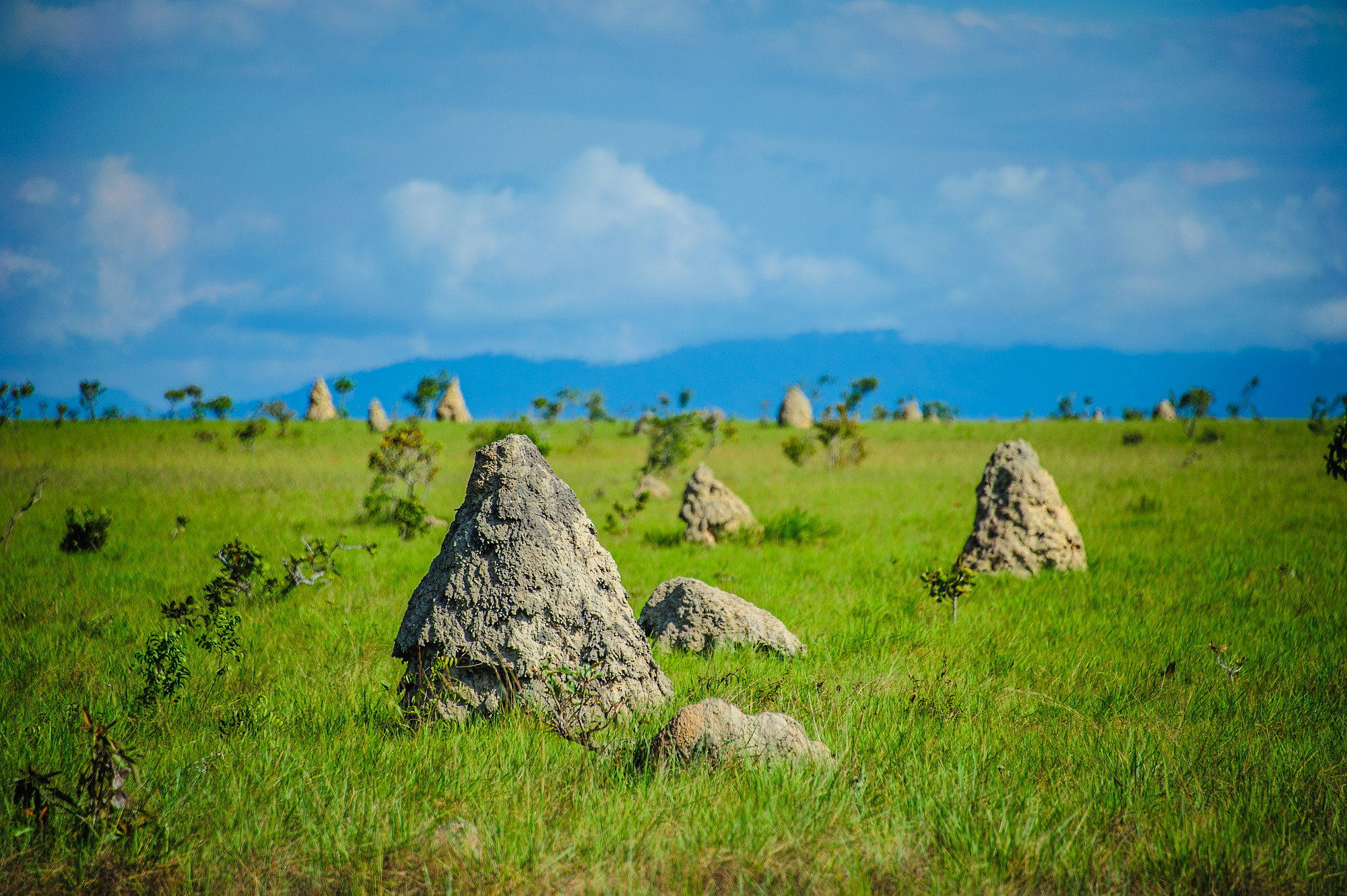 I stretched out in the water and relaxed. No wind, water as smooth as glass, silence all around. White, soft, grey clouds lit up by the late afternoon sun were reflected in the still water. The air was warm but not suffocating; a few hours ago a rain shower had taken the stifling heat out of the air. We washed the dust out of our hair and scrubbed our bodies clean. It was just the two of us in a vastness of silent savannah that overwhelmed us.
I stretched out in the water and relaxed. No wind, water as smooth as glass, silence all around. White, soft, grey clouds lit up by the late afternoon sun were reflected in the still water. The air was warm but not suffocating; a few hours ago a rain shower had taken the stifling heat out of the air. We washed the dust out of our hair and scrubbed our bodies clean. It was just the two of us in a vastness of silent savannah that overwhelmed us.

No package deal can buy you this wealth, this feeling of richness to be in a place like this, all by ourselves in a wilderness so vast it rang in our ears. A wandering dog, a couple of Amerindian houses in the distance, the first sounds of frogs and nocturnal insects, the moon climbing the heavens while the sun was still sharing its heat. This is exactly where we wanted to be and enough reason in itself to have come here. The Rupununi is an overlander’s paradise.

The Rupununi Savannah
We were in Guyana, a small country along the northern edge of South America. It borders Venezuela in the west, Suriname in the east, and Brazil in the south. Until 1966, it was a British colony, which explains why most people speak English. The Rupununi are vast open plains stretching across all of southern Guyana. The region is home to different groups of Amerindian people, many of whom make a minimal living in the logging and mining industry. Poverty is poignant, and government and international NGOs are trying to turn this around through ecotourism, providing the local people with an alternative and more sustainable source of income.

After a blissfully quiet night, we woke up to the sound of heavy metal blasting through the Land Cruiser, vibrating the air, the bed, my veins. In the distance were some houses, and in one of them somebody felt the urge to share his music with the entire northern Rupununi at 6.30 a.m. Many Amerindian villages had recently received solar panels, batteries, and two lamps from the government. Some of the men working in the mines now return home having spent their money on a stereo and boom boxes. It is only a question of time and this type of alarm clock will be common practice, killing the overwhelming tranquility of the savannah.

Under a dark grey, overcast sky we ate our breakfast, after which we packed up and returned to the main road. We stopped in Wowetta, a Mapuchi village with houses scattered across the grasslands. In a shop we asked if they knew Sergió, a guy who had invited us to stay with him. Two young girls knew he had just left for Surama, a village we passed yesterday, but had no idea when he might return. A woman sat on the ground in the shade with two kids and I sat down next to them. A puppy ran up and I played with it. We shared a guarani (a kind of soda) and I bought Maria biscuits, which came in handy after the last piece of our bread had been destroyed by fungi. Content to be sitting here, we took our time debating the options. It would be interesting to be guests in a village like this for a day or two, but oh well, sometimes things don’t work out and so we decided to move on.

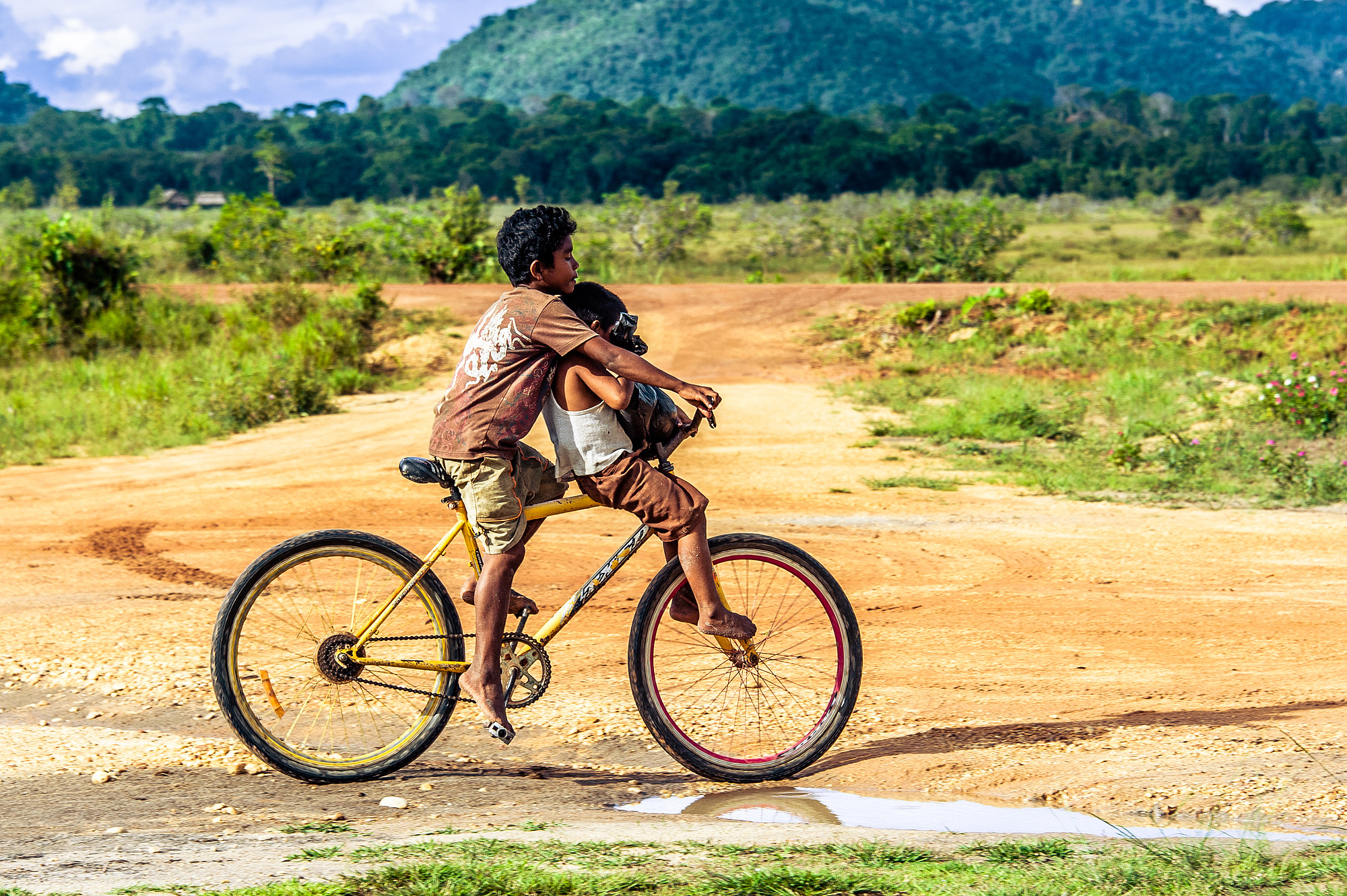
The Dakota Bar
We followed the unpaved road south that cut through the plains, with the foothills of the Pakaraima Mountains rising up on our right, and white clouds decorating the sky. We stopped at the Rockview Lodge. According to my book it was home to the Dakota Bar. I was intrigued by the history of the Rupununi and this area in particular. The Dakota Bar was famous during the 1960s when Dakota planes plied between the capital of Georgetown and the Rupununi to bring meat to the capital.

Until the 1950s, however, cattle drives moved across the country. From the Dadanawa Ranch, some 400 miles farther south (and around 1900 the world’s largest cattle ranch) vaqueros drove cattle across the Rupununi Cattle Trail. To cross rivers, pontoons were used and the cows were fattened on the coast before being slaughtered in Georgetown. Such cattle drives must have been a sight to behold. With the arrival of air transport, the Rupununi Cattle Drive closed down in 1953 and the Rockview ranch house built an airstrip from which Dakota planes would transport the meat (and other local produce such as peanuts and tobacco) to Georgetown. The Dakota Bar was the place for vaqueros and pilots to rest, enjoy a drink, and catch up on the latest news.


The Rockview Lodge
Collin Edwards, the owner, welcomed us. He invited us to share lunch with him and stay for the night. The three of us walked to the Dakota Bar. It was still part of the lodge, but the atmosphere had nothing to do with how I had imagined it to be. What had I expected? A couple of cowboys and pilots drinking beer and swapping exaggerated stories? I was looking at an uninspiring counter of bricks topped with a wooden plank, with shelves full of souvenirs for sale behind the counter. A few pictures on the wall were the only reminders of the old days. Collin bought the ranch in 1992, and as such, the Dakota Bar was not part of his history. Today, tourists are the ones who walk in for a drink and to play dominoes. The airstrip still exists as well, used by Cessna 206s and C-208s that no longer carry meat but tourists.

I let go of my imagination and focused on today. I spent a lot of time in the lodge that has a wealth of (photo) books detailing the history of the Rupununi, including old maps. If ever I return to Guyana, I’d like to come back here and delve deeper into the Rupununi’s culture and history.
Hendriks, Collin’s duty manager and guide, took us for a stroll around the premises: the swimming pool, gardens and a stunning view over the savanna from the highest rock, which is a great spot to watch sunsets. The previous owner called this Rock Point, he said, because there hadn’t been much vegetation. Collin, who loves gardening, changed that, and in a photo book we see photos of “before” and “after.” It was easy to see what the result of determination and proper irrigation had been: today, the lodge consists of a lush garden full of fruit trees, vegetables, a fish pond, good grass for 60 cows and a couple of horses. In the vegetable garden, they grow common produce such as string beans and jackfruit, but also anatu, the red “fruit” that Amerindians use as paint and for a condiment. It is used by women during their period as well, when they are vulnerable to demons—they put dots of anatu on the inside of their hands, behind their knees, under their foot soles, and on their cheekbones to keep the demons away.
 That afternoon, Hendriks took us for a walk along a forest nature trail. His father had started the construction of the trail in 2003 but had died that same year, and Hendriks finished it with a team in 2006. It was a pretty steep climb, clambering over rocks and holding on to rails that have to be replaced every year. Humidity rapidly destroys the wooden constructions. We spotted birds and small lizards but no wildlife. On the top, narrow side trails led to open spaces from where we looked out over the vast savanna. Meanwhile, Hendriks talked about his Makushi heritage, on how the traditional houses were built of thinly cut trees called wattle, or of bamboo and palm tree leaves, but that today bricks were brought in from Georgetown. He explained how life was changing—he and the older generations spoke Makushi and had English as their second language, but for the younger generation it was the other way around.
That afternoon, Hendriks took us for a walk along a forest nature trail. His father had started the construction of the trail in 2003 but had died that same year, and Hendriks finished it with a team in 2006. It was a pretty steep climb, clambering over rocks and holding on to rails that have to be replaced every year. Humidity rapidly destroys the wooden constructions. We spotted birds and small lizards but no wildlife. On the top, narrow side trails led to open spaces from where we looked out over the vast savanna. Meanwhile, Hendriks talked about his Makushi heritage, on how the traditional houses were built of thinly cut trees called wattle, or of bamboo and palm tree leaves, but that today bricks were brought in from Georgetown. He explained how life was changing—he and the older generations spoke Makushi and had English as their second language, but for the younger generation it was the other way around.
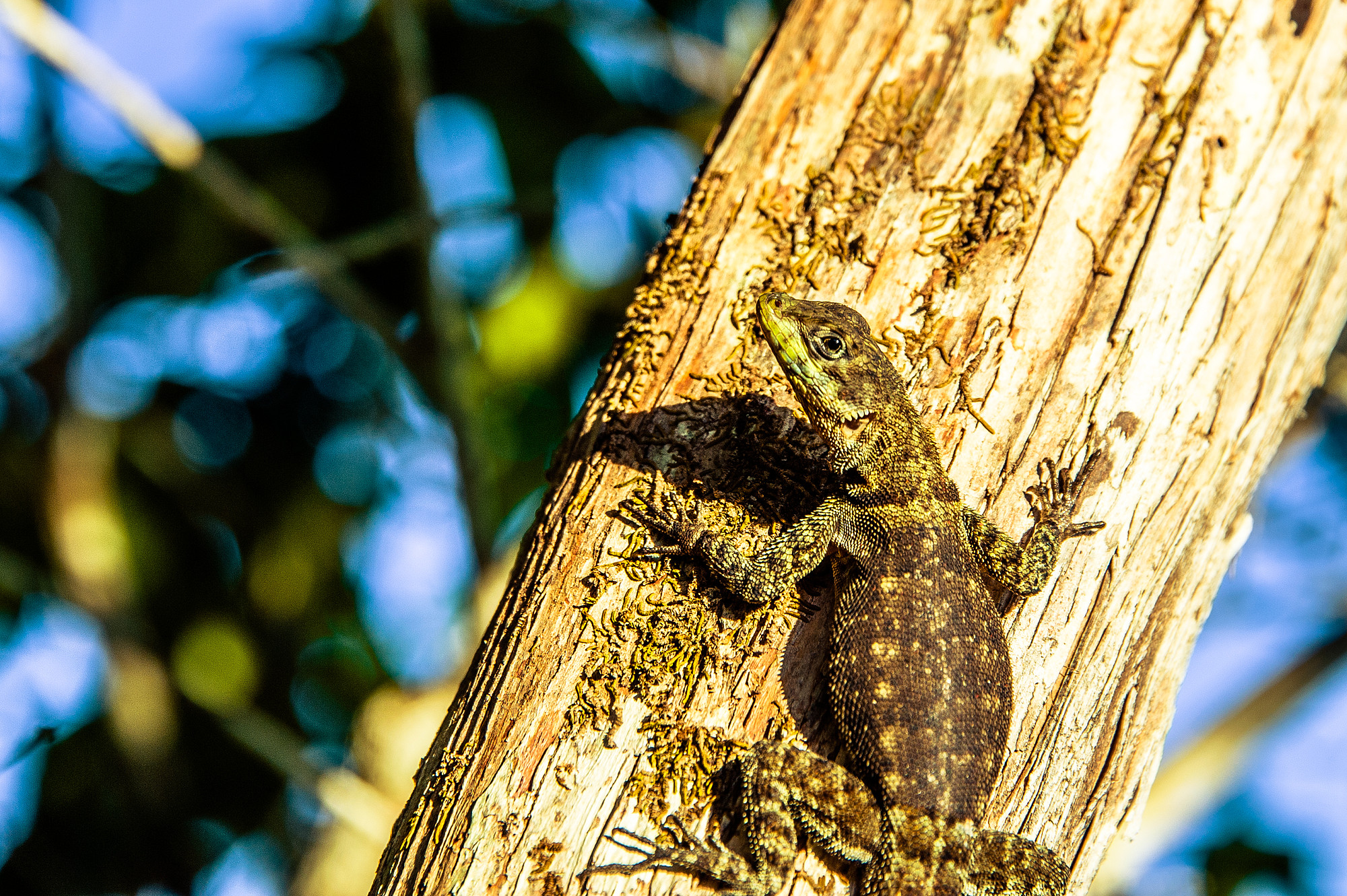

It was a beautiful place to linger, but with visas running out and more places on our list before we’d reach the border, our schedule was a bit tight. For one, we wanted to search for the location of the fabled El Dorado—the Rupununi had been one of the potential places for this famous golden country. The question was whether we could, because in some places, flooded rivers had become impassable. But all that lay ahead of us and will be another story.



